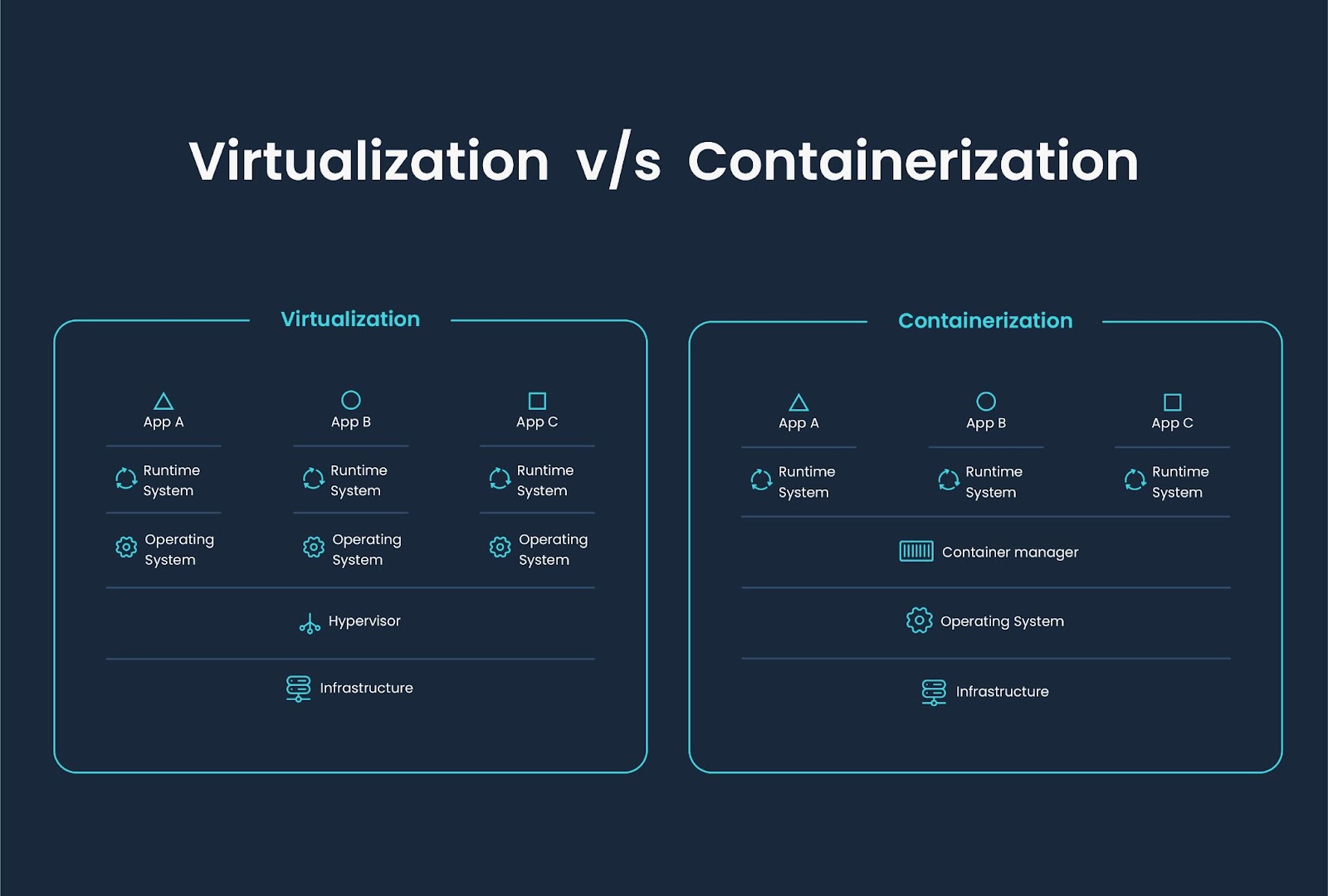Virtualization and Containerization: The Future of IT Infrastructure
Virtualization and containerization are rapidly changing the way IT infrastructure is managed and deployed. In the past, IT infrastructure was managed using physical hardware and software, which was often costly and time-consuming. However, virtualization and containerization have revolutionized the way we think about IT infrastructure, making it more agile, scalable, and cost-effective.
Virtualization
is the process of creating a virtual version of something, such as a server,
storage device, network, or operating system. By creating virtual resources, IT
organizations can improve resource utilization, reduce hardware costs, and
increase scalability. Virtualization also makes it easier to manage and deploy
IT infrastructure, as virtual resources can be created, modified, and deleted
using software tools.
One of the biggest benefits of virtualization is that it allows IT organizations to create multiple virtual machines (VMs) on a single physical server, reducing hardware costs and improving resource utilization. Virtualization also makes it easier to manage and maintain IT infrastructure, as VMs can be easily migrated between physical servers, allowing IT organizations to balance workloads and optimize resource usage.
Containerization is a form of virtualization that allows developers to create self-contained
units of software that can be run on any infrastructure that supports
containerization. Containers are designed to be lightweight and portable,
making it easier to deploy and manage applications across multiple
environments.
One of the
biggest benefits of containerization is that it provides a consistent runtime
environment for applications, regardless of the underlying infrastructure. This
makes it easier for developers to create and deploy applications, as they can
be confident that their applications will run correctly regardless of the
infrastructure.
The Future of IT Infrastructure
Virtualization
and containerization are both key technologies that are transforming the way IT
infrastructure is managed and deployed. As the demand for cloud computing and
digital transformation continues to grow, virtualization and containerization
are likely to become even more important.
In the
future, we can expect to see more organizations adopt hybrid and multi-cloud
architectures, which will require them to manage and deploy IT infrastructure
across multiple environments. Virtualization and containerization will play a
critical role in enabling organizations to manage and deploy IT infrastructure
in a consistent and efficient manner.
We can also
expect to see more organizations adopt DevOps practices, which will require
them to develop and deploy applications more quickly and efficiently.
Virtualization and containerization are both key technologies that can help
organizations achieve this goal, as they provide a consistent runtime
environment and make it easier to deploy and manage applications.
Transforming the Cloud
Virtualization
and containerization have both transformed the cloud in a number of ways. Here
are some of the key ways in which they have had an impact:
- Improved Resource
Utilization: Virtualization allows cloud providers to improve resource
utilization by creating multiple VMs on a single physical server. This
means that cloud providers can offer their customers more resources, while
keeping costs low.
- Increased Scalability:
Containerization makes it easier to scale applications quickly and
efficiently. This means that cloud providers can respond to changing
demand more quickly, ensuring that their customers' applications are
always available and responsive.
- Faster Deployment:
Containerization makes it easier to deploy applications, as containers
provide a consistent runtime environment. This means that developers can
create and deploy applications more quickly, reducing time to market.
- Greater Flexibility: Virtualization and containerization both provide greater flexibility, allowing customers to choose the infrastructure that best meets their needs. This means that customers can choose between public, private, and hybrid cloud environments, depending on their requirements.
Differences between Virtualization and Containerization
- Resource
utilization: Virtualization
allows multiple VMs to share the same physical infrastructure, while
containerization allows multiple containers to share the same operating
system kernel. As a result, virtualization typically requires more
resources than containerization.
- Isolation: VMs are fully isolated
from each other, while containers share the same operating system kernel.
While containers offer a level of isolation between applications, they do
not provide the same level of security as VMs.
- Portability: Containers are designed
to be portable and can be run on any infrastructure that supports
containerization. VMs, on the other hand, are tied to a specific
hypervisor and may not be portable across different hypervisors.
- Flexibility: Virtualization and
containerization both offer flexibility, but in different ways.
Virtualization allows customers to choose the infrastructure that best
meets their needs, while containerization allows developers to create and
deploy applications more quickly and efficiently.
While virtualization and containerization share many similarities, they are two distinct technologies with different use cases. Virtualization is best suited for running multiple operating systems on a single physical server, while containerization is ideal for running multiple instances of an application on a single operating system. Ultimately, the choice between virtualization and containerization depends on the specific needs of the organization and the applications that need to be run.



Comments
Post a Comment